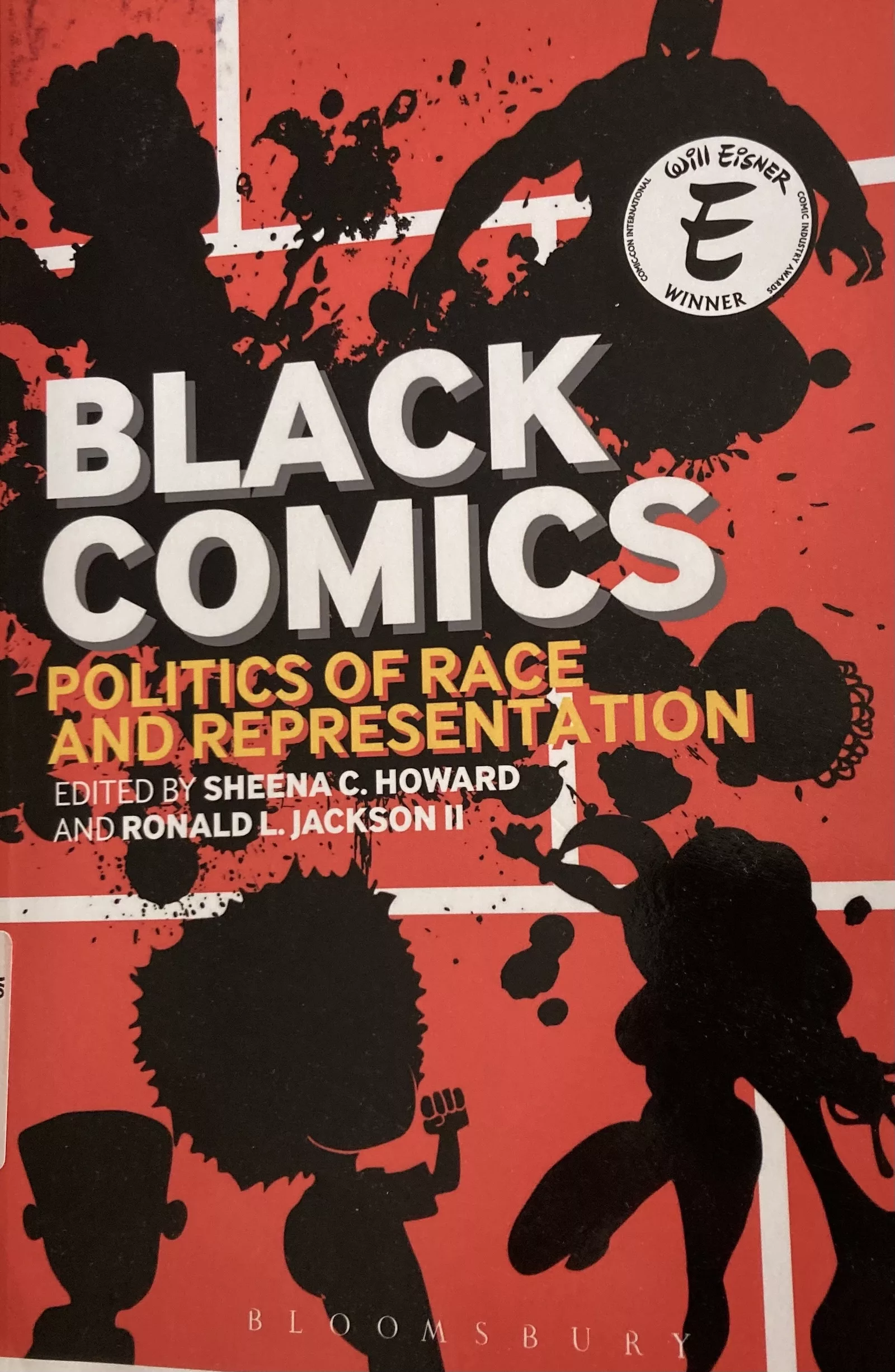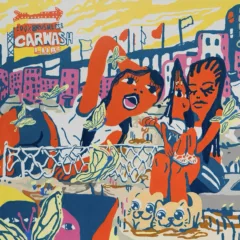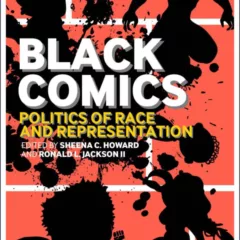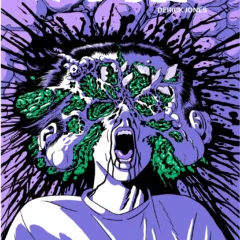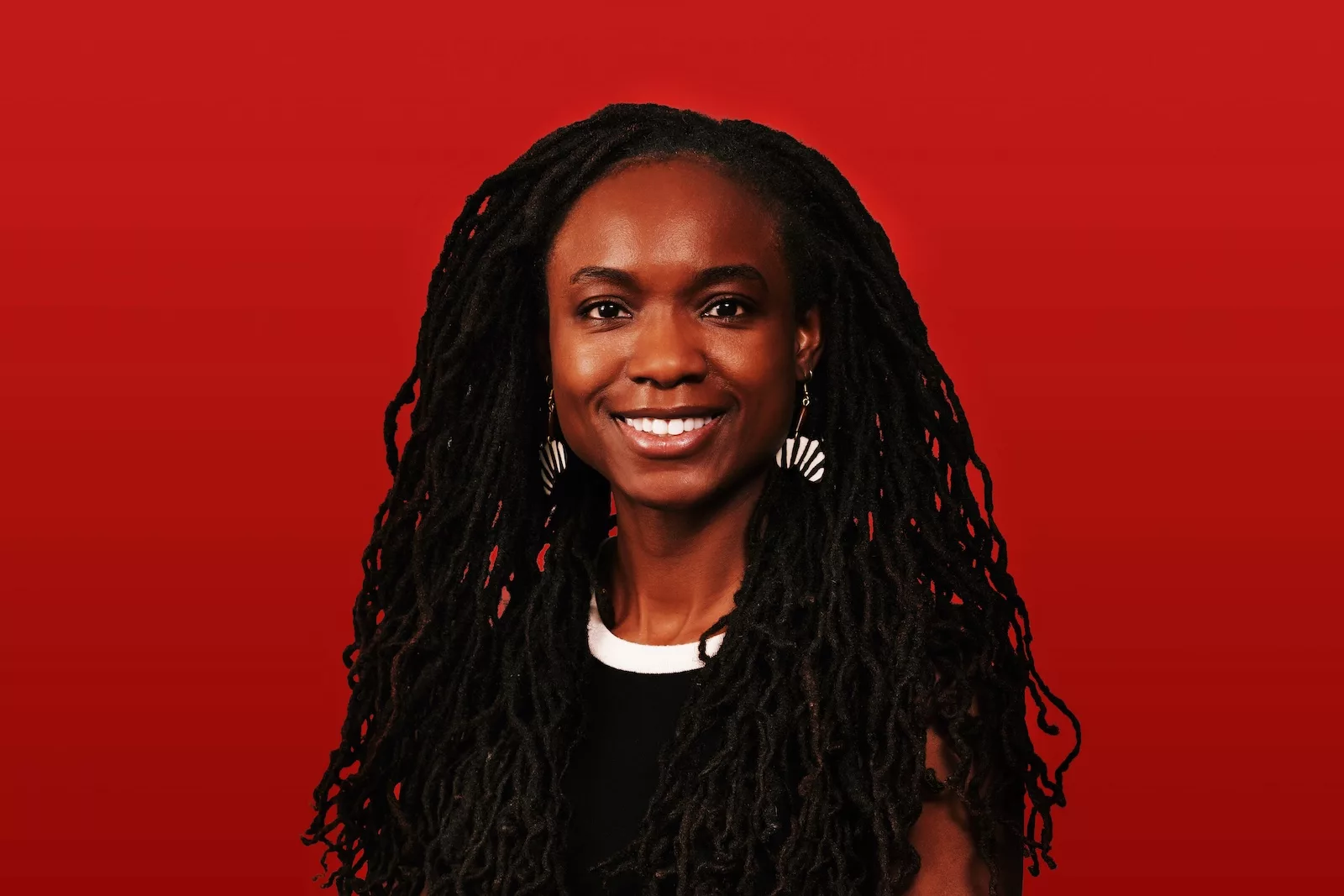
Introduction
I talked with Dr. Sheena Howard on Zoom earlier this year about a book I initially knew her through, Black Comics: Politics of Race and Representation, for which she is editor, along with Ronald L. Jackson II. In our conversation I found out that the writer, scholar and professor (at Rider University) is also an entrepreneur, a successful Patreoner and a person who believes in education and in passing knowledge on to others. Our conversation focused on her work as a professor and her work as a Patreoner with a unique mission – to share with creatives some best practices on that and other social media platforms — and not see it as drudgery but as part of their art practice that could help them with their art careers and steer them away from being a barista. The interview has been edited for length and clarity.
Roberta Fallon: How did you get interested in Black comics? I know in your book. You say you wrote your dissertation about it. But before that. Did you make comics yourself, know people that made comics? How did this come about?
Dr. Sheena Howard: So the short answer is pretty much no. Before I did my Phd, I didn’t read comics. I wasn’t into comics. I don’t even feel like when I was younger comics were even marketed to somebody like me. So that’s probably a another conversation. But when I was in Washington, DC., doing my Phd at Howard University — I was very young when I started my Phd — I was 23 years old, and a lot of the people in the classroom were older than me, and they knew what they wanted to do. They knew what their dissertation topic was going to be. And that was expected of us, to know what we wanted to write about. And I didn’t.
So I was kind of in panic mode, like ‘What the heck am I gonna write about?’ And I just happened to be really into The Boondocks comic strip at that time. It was witty. It was fun. It was smart, it was commenting on real time political issues. It was interesting. And so I was like, ‘Oh, I’m gonna do my dissertation analyzing this, cause it checked all the boxes in terms of allowing me to do a rhetorical analysis. It was interpersonal communication. And so that’s what I did, and that was when I really started to dig into this world of comics and that kind of thing.
Roberta: Interesting, so interesting. It was a comic that brought you around to this more global thinking about cultural gatekeeping and imagination, and a lot of the things that you talk about in your introduction (to the Black Comics book). I really loved it.
Sheena Howard: Thank you!
Roberta: You’re welcome. So just out of curiosity. What did you study undergrad? Were you English or social studies, or…
Sheena Howard: Actually, my undergraduate degree is a business degree. I have a degree in marketing. Random, it seems random, but it’s really not, and then I have a master’s degree in graphic design, and my Phd is an intercultural and rhetorical communication.
Roberta: You cover all the bases!
Sheena Howard: Yeah, haha. All the creative entrepreneurship degrees, I have, haha.
Roberta: Well, that gets into what you’re doing now, which is your consulting. And let’s get into that later because I’m interested in that also, as an agency of promoting artists. I think it’s great. So when did you start thinking about imaginative lenses that people create for themselves? When you were a Phd student or a graphic design student. Design is a lens that you put on something.
Sheena Howard: Yeah. I’ve always been creative. And, to be honest, I think the school system kinda suppressed my creativity a little bit and didn’t allow me to be creative. I felt like school was all about coloring inside the lines. You’re not supposed to do it outside the lines. And so I didn’t understand that I could be a writer, and be a writer, like, full time. And so I just stayed in school. This is why I have a Phd. To be honest. This is because I stayed in school, because I never really knew what I wanted to do, and I was very good at school and so I just stayed in school. And this is why I always tell people I feel like I lost 10 years because I spent 10 years in school, and I could have spent 10 years being a writer and building my writing career.
Now it all works out in the end, because all of those experiences have all worked out. But I do feel like that. And so my creative lens is just a blend of all of these different experiences. I’m a professor, I believe in higher education, but I also see its limitations. I see how it kind of gave me a lot of limiting self beliefs around being a creative entrepreneur. I’m in both worlds. And all of those things coincidentally make me a better professor, like being creative and being an entrepreneur makes me a better professor.
Roberta: Oh, absolutely. I do believe it. Also, to get outside of yourself. To create this world view, you need to get outside of yourself, which means you’re able to, in the best of all possible worlds, connect with your students, connect with other people, cause you see them. You’re not totally internally focused.
Sheena Howard: Yes, yes, yes, and you could just bring multiple experiences to an example or a problem. So I have my Professor Lens. I have my creative entrepreneur lens. I have my mom lens. All of these layers just really really help in the kind of understanding and empathy, and all of those things that you need, I think, just to be a kind, creative person trying to grow.
Roberta: Yeah, and you’re so young. My gosh.
Sheena Howard: I Look younger than I actually am.
Roberta: Great. Everybody should look younger than they actually are, haha.
Sheena Howard: Yes haha
Roberta: Are there any Black Superwoman heroes these days? What do you think? I think of Beyonce, among others…and I don’t know. Are there contemporary comics that feature a Black superwoman?
Sheena Howard: Yeah, so I think…it’s like hip-hop music, okay. If you just listen to the radio, you’re missing 99% of hip hop music, and what the hip hop world is doing. And comics are the same way. If you’re just reading Marvel comics or reading headlines about Marvel comics and DC comics, you’re missing 99% of the comics world. So there are a lot of Black creators building their own companies, building their own universes, doing a lot of amazing work that I do follow on Instagram and I support them at comic conventions. There’s this one Black female creator. She has a comic book, and the superhero is Luna. I can’t remember if the name of the book is Luna, or the actual hero is Luna, but it features a Black female superhero, and that is a part of an actual universe, its own universe, and they’re gonna kill me, cause the name is escaping me like literally. My son has the little doll and the books in this house. But yeah, if you look up Luna the superhero, you’ll find the entire universe, and you could put it in the story, for sure…Oh, yeah, concrete comics. Konkret. They have an entire universe, an entire company of all these these Black superheroes. And they’re just really, really doing amazing work.
Roberta: So they’re like a publisher?
Sheena Howard: Yup, Yup, and they have multiple storylines and Kickstarters. And yeah. But but my point is, there are a bunch of these, and I’m probably not even the best person to ask about this, because, to be honest, I don’t consume a lot of pop culture. I don’t read a lot of comics. And it’s actually to my benefit because sometimes when you’re consumed by this stuff you box yourself in. ‘Oh, I can’t do that, (create a) superhero, because it’s already created’…’Oh, these are the constraints I have to be in, because this is the way Marvel comics does their heroes.’ And ‘Oh, I can’t think of any different superhero power.’ You know, me not consuming all that stuff makes me more creative because I don’t restrict myself.
Roberta: Yes.
Sheena Howard: (Getting back to her book, “Black Comics: Politics of Race and Representation,” which came out in 2013.) I need to do a 10 year anniversary now (of the book).
Roberta: Yes, you do! I got my copy on Abe books online. And it’s in mint condition.
Sheena Howard: And you know what, Roberta, you better keep that copy because you probably don’t realize this. But that book that you have it has the Eisner logo on it. That’s a very rare limited edition. They only allowed us to use the logo for a small print run. So that book you have there is a limited edition.
Roberta: Awesome! And congratulations on winning that award. That’s great.
Sheena Howard: Thank you.
Roberta: Anyway, a lot of the articles that are in your book talk about comic strips that ran in newspapers, and since newspapers are dying and subscribers are pretty much over the “paper paper,” newspapers are mostly online. I went to the Inquirer, the Philadelphia paper, online, and they do have a lot of “comic strips.” Mostly by white artists, but there are a few Black comics. I’m wondering what you think about whether or not comic books are more state of the art for comics artists of color who want to make a comic with a continuing storyline, or whether newspaper comics are? In other words, comic books rather than strips that are recurring in the paper.
Sheena Howard: So, yeah. I think it depends on the creator’s, goals. Because now we have so much access to tools and technology that it really doesn’t — I don’t want people to take this the wrong way — but in my opinion, doesn’t matter so much if a big paper, or whatever doesn’t pick you up because you really, truly can build your own audience and really make a living doing this. I’m not saying it’s easy. I’m saying that there are tools that people did not have in the fifties, in the forties. Where you can find your audience and create a fan base. Now. I’ve seen creators create their own thing and then get picked up by these big companies.
Yeah, that’s rare. But I’m saying there is a pathway. And even if Marvel or DC or your newspaper doesn’t pick you up, you could still build your audience. There’s web tunes, Instagram, but you need to know more than just creating the art. Right? You need to know not just storytelling in terms of creating the art, but storytelling in terms of what works on social media, to get attention and monetize, and all that stuff creators don’t want to do. I understand you want to be doing your art. But if you want to monetize and build an audience, you do have to do the digital marketing thing.
Roberta:Yes. Oh, man, that’s so true. I mean, it’s a double-edged sword. You want to have those tools available to you. It’s a really great world that we live in, that you can get Instagram for free. That’s pretty amazing. And Tiktok. Those are those powerful tools. But the line between making your art and being your own administrator is killer. Because you have to be your own administrator and 80% of the time, it’ll kill your art.
Sheena Howard: It’s a lot. But what are your goals? Creators have to ask themselves, what are your goals? And you can make six figures as an artist with these tools, forget having a million followers. You can make six figures with 3,000 followers with your art. But it does require you to learn other things besides your art. And I don’t think that people realize that if you’re an artist, you’re a storyteller. Whether you’re painting a picture or a writer. I don’t think people realize how the skill that they have is actually transferable to building the audience to social media. You just apply that skill to building the audience.
Roberta: You tell them the story.
Sheena Howard:Yes, and not always the story about your art. But the story about you.
Roberta: Yes, although you don’t want to become your own brand, you know, you, you you all the time.
Sheena Howard: People are gonna buy your art for you first, not for the art, because we’re living in a sea of art. So think about your favorite actor, your very favorite actor. When they put a movie out. You’re like, ‘I don’t care if that movie is going to be bad. I just want to see them.’ That’s the same way for creatives. I’m buying it because I heard you in an interview, and you touched me. You told me about a tough time that you had; you touched me, and so now I can see your art through the lens of knowing you.
Roberta: Right, and it’s like having a piece of that person.
Sheena Howard: Yes. Context. And you get the person.
Roberta: That’s that’s a good segue into artist agents and consultants and agency, because you are one. You just came out with a new book, and it’s all about empowering creatives. Tell me how that came about. What’s the name of your new book?
Sheena Howard: I published three books so far this year.
Roberta: Oh, my God, three!
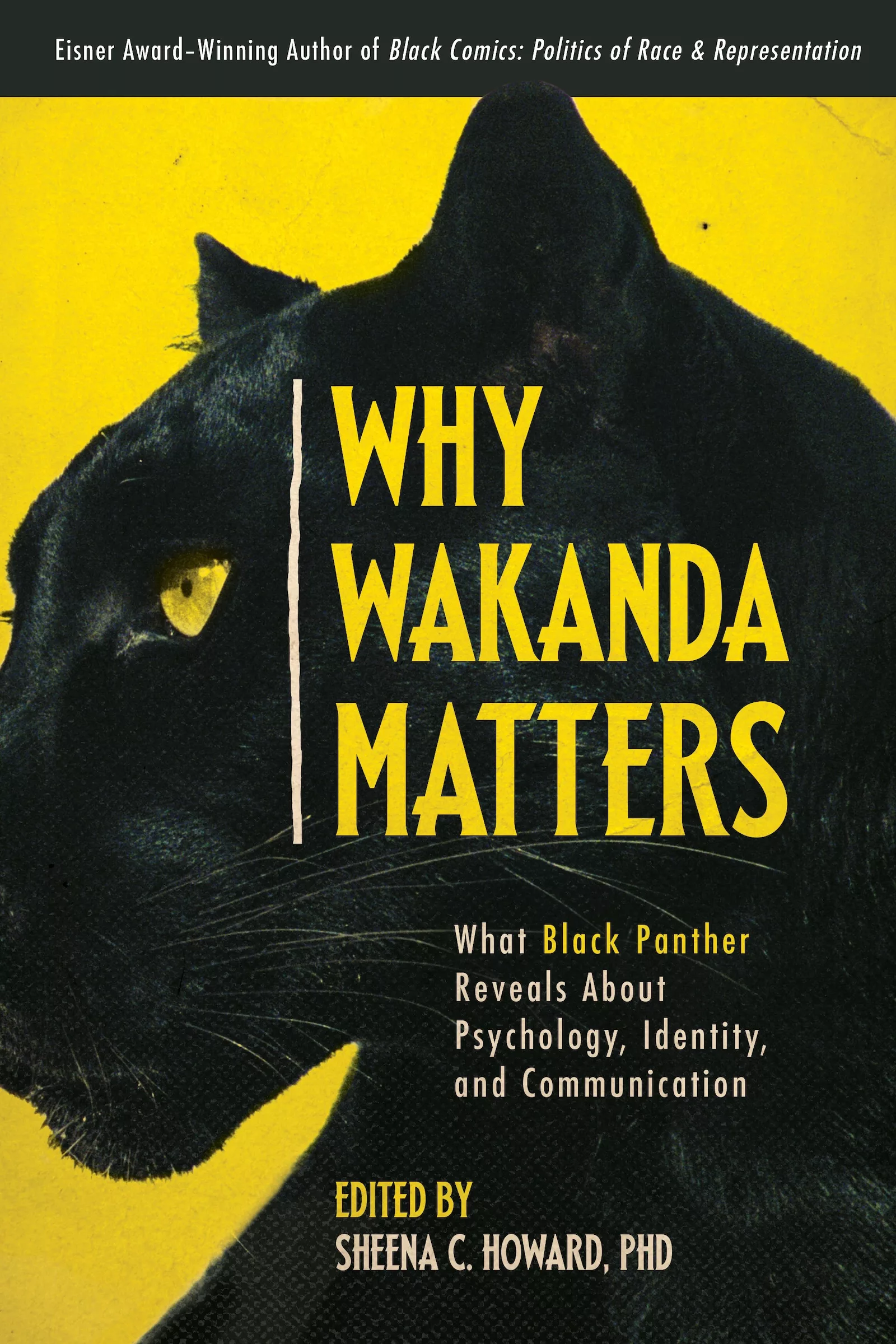
Sheena Howard: I published a book on academic branding with Benbella press. I’m a traditionally published author. And then I self-published two books this year already, one is called “Herstory The Fairy: Meet Marion Anderson.”
Which we just did an event around. I gave the book out for free. I did a print run, and the book was free to everybody that came to the event. A beautiful book, Andre Chaney did the artwork. He does murals around the city, and it was amazing and I was fortunate to get $10,000 of grant money for that book.
And then I published a book called “First 100, your Patreon Strategy Guide.” which teaches creatives how to get their first 100 Patreon members so that they can start getting paid by their community for the work that they love to do. Those are the three books I have published this year. And then I have another book due to the publisher on August 1st called — you’re the first person I’m telling this to. Actually, I’m not gonna tell you. But I have another book due to the publisher on August first that I think people are gonna love. It’s in line with the book, “Black Comics,” the Eisner award winning book. It’s in that vein.
Roberta: Great! But haha, you won’t tell me. Oh, well, when when the publicity is there, please put me on the list.
Sheena Howard: Definitely, when they put the Amazon image up. I’ll email you.
Roberta: Let’s talk about the “First 100.” I think that’s maybe spinning in out of what we were talking about with artists, and the split between administration and making art. I love Patreon and support a couple of artists on there, and people have said to me Artblog should be on Patreon. Tell tell me why you made this book.
Sheena Howard: Yeah, yeah, yeah, yeah, yeah, thank you. I’m so glad you you asked me this, Roberta, cause this is going to be helpful to creators. And that is what I exist for. When I got to my first 100 Patreon members I promised my community that I would write a book, teaching them how to get to their first 100 Patreon members.
Roberta: Oh, What a great challenge!
Sheena Howard: Yes, I am a teacher at heart. I cannot know something and not help people do it. It just in me. If I know it, I have to give the information to help other people. Period. Remember, I’m a professor. A writer first, but Professor. And the reason why this is so important to me is because I want creators to be able to do the thing they love full time. I think the world will be a better place, and we’ll have many more happy people. Now creators like to say, ‘If I’m spending all this time on the admin stuff, then I’m not doing my art.’
I wholeheartedly disagree with that. You know why, Roberta? Because you’ll find these artists who are working one, two jobs. And doing their art on the side. So why not spend that time being the administrator of your own art, doing the Patreon, doing the social media, doing the digital media so that you can do your art full time instead of working two, three jobs for somebody you don’t really want to work for just to do your art on the side, right? Because either way, you’ve got to work for somebody to make the money.
Roberta: Yeah.
Sheena Howard: Mind, this will work. And then, once you understand that you can transfer your creative skills to the admin work, it all becomes art. I created the “First 100” to help creators. I don’t care what type of creator you are. Get to your first 100 Patreon members, because that’s income coming in, income that you can rely on. Now I can share share two or three things in the book to help people. I don’t know if you want me to do that, but that’s why I wrote that book, and when I get to 500 Patreon members the gift is, I’m going to release a $500 micro grant for my Patreon community.
Roberta: Competitive grants that people will apply for?
Sheena Howard: Yup, so all of my members will be able to apply for it. I’ll either do one $500 micro grant, or two grants, which will be $250 each. I’ll ask my audience which one they prefer, but as the community grows, I can offer more grants.
Roberta: That’s so great. Feeding the community.
Sheena Howard: Yes. And Artblog should definitely do a Patreon. Period. But consulting, if you want me to consult on it, I’m happy to be your admin.
Roberta: Thanks! Can you be a nonprofit on Patreon? That’s my big question. We’re nonprofit.
Sheena Howard: I don’t know. You have to look up the rules on that. Nonprofits have all these different rules on income. You make an income right? There have to be nonprofits on Patreon already doing it. I have to imagine that there are.
Roberta: Yeah, we make income. Makes sense. I’ll research it. Give us one tip from the book. And how do I find out where to get this book?
Sheena Howard: I actually just put it on Amazon the other day. It was only available to my Patreon community. And listen. I actually mailed out physical copies to all of these people. And then I made it digital to the people that weren’t a part of the “First 100.” So I put in work for this, and you can either get it right off of my Patreon if you want to support me directly, or you can get it on Amazon itself. So it’s still supporting me directly.
Roberta: Well, I’ll check out your Patreon.
Sheena Howard: Yes, please do, please do. The one biggest tip. So there’s probably ten tips in the book, because it’s a step by step process, but the one biggest tip a lot of creators initially think of Patreon as ‘Hey, my fans are gonna join my Patreon because they want to support me.’ It’s like a charity thing. They like me. They will support me. That’s the wrong way to think about it.
Roberta: Hmm
Sheena Howard: You need to be thinking about your Patreon as the value you’re going to be giving people in the Patreon. People are going to spend money on you if there’s something in it for them. So, you’re not going to be able to grow a successful, thriving Patreon page — from what I learned — if you’re not offering value.The value of me getting to a hundred Patreon members was that the community was getting something, too. It wasn’t just all for me, just ‘Hey! You like me and you like my work, and you like something I said. Pay me $20 a month.’
I don’t think that’s sustainable. And yes, you’ll get a few people that will just pay you cause they like you. But to grow it, to scale it to 100, to 500, you’ve got to offer value. And so what creators should hear me saying is, ‘Yes, this is more work that you have to do that’s not about painting your canvas. But you can make it about painting your canvas.’
Say, when I get to 100 members, I’m going to paint all of you. An original painting. Does that take time? But you’re doing the art that you love to do. Did it take me time to write that book? Yeah, a lot of time. Did it cost me money to physically mail a copy out, yes, and to me it is worth it. It’s worth it, because I’m up to what is it? $1,300 a month. I’m almost paying my rent. And I want that for creators. That’s just the tip of the iceberg. $1,300, right? I’m just getting started.
Roberta: I love it. The Patreon system hearkens back to…I guess Medieval times when there were patrons, the church mainly, and later, in the Renaissance, rich patrons that would hire people and pay them, like Michelangelo had a patron. And you could say that’s a really bad system, because it was the church, and rich people and who knows how much the artists got paid. But it really fueled the art. Look at the art that we have as a result.
Sheena Howard: This is what I’m saying. If you’re going to spend time working that day job and getting the minimum wage. And now you have to go to your other day job. And now you’re just doing your art on the weekends… I promise you, if you learn the admin, the digital marketing, the posting, most of the all the stuff that you don’t wanna do, you can replace those jobs that you don’t want to do and think about it as a part of your art. I got to write an exclusive book for my Patreon members. I’m a writer. Think about it for me, creating the social media content that has become art. I write the scripts, I write it all. So, do your beautiful paintings and make the admin stuff a part of your art.
Roberta: I think those are wise words. When my art collaborator, Libby, and I, started Artblog back in 2003, we were still making art together. And 21 years later people ask do you do art anymore? And I always say Artblog is the art now. And what do I do on Artblog? A lot of administration!
Sheena Howard: That’s right, that’s right, that’s right. But once you start making money at it as an artist, you can outsource stuff right? So this is the next level conversation. Once you start making the money. Now, I can hire a membership success person for Patreon. That’s doing all the Patreon, and I don’t have to do it that much anymore. I can outsource the social media stuff because I learned about my audience. I know what they like. So it is very beneficial to follow this process.
Roberta: It is. You feed the arts economy. The arts economy is big, but it’s not big enough.
Sheena Howard: That warms my heart more than making money. Being able to hire creative contractors like my editor, who is messaging me right now. I get to pay him $1,200 a month to do my social media videos because I’m doing the other work. I just love paying these creatives.
Roberta: Yes, me too. It helps the world go around.
Sheena Howard: Yes, yes, yes.
Roberta: Holy smokes. Well, that seems to me a really great note to end on. Is there anything more to talk about? I’m very stoked here. I’m going to go to your Patreon as soon as I get off.
Sheena Howard: Thank you. No, I’m just very grateful, Roberta, that you took time to talk to me. I really appreciate it. I am truly grateful. I really enjoyed the conversation.
I just really want to help people be able to live in their creative dreams. I think a lot of people are angry and unhappy because they don’t get to do that, and they don’t see a pathway to do it, and they know they have creativity inside of them, but they have to go to this job that they don’t want to do. And so if I can help in any small way on anybody’s journey, that’s what I do in in my Patreon. That is why I’m there, and so thank you for for just giving me the opportunity to reach a new audience.
Roberta: I would like to say I’m very grateful for the conversation, too. You’ve opened up my eyes to a whole bunch of things, ways of thinking and links to other comics and other artists, and other ways of doing administration and thinking about administration. So thank you.
Sheena Howard: Same here.
Roberta: Your energy and your thoughts. Thank you so much. Doctor Howard. Bye.
Sheena Howard: Have a great day.
Roberta: You as well. Bye, bye.
Sheena Howard: Bye.
More books by Sheena Howard
Sheena Howard on Patreon
Professor Sheena Howard at Rider University
Sheena Howard’s Ted Talk on Self Empowerment (YouTube)


